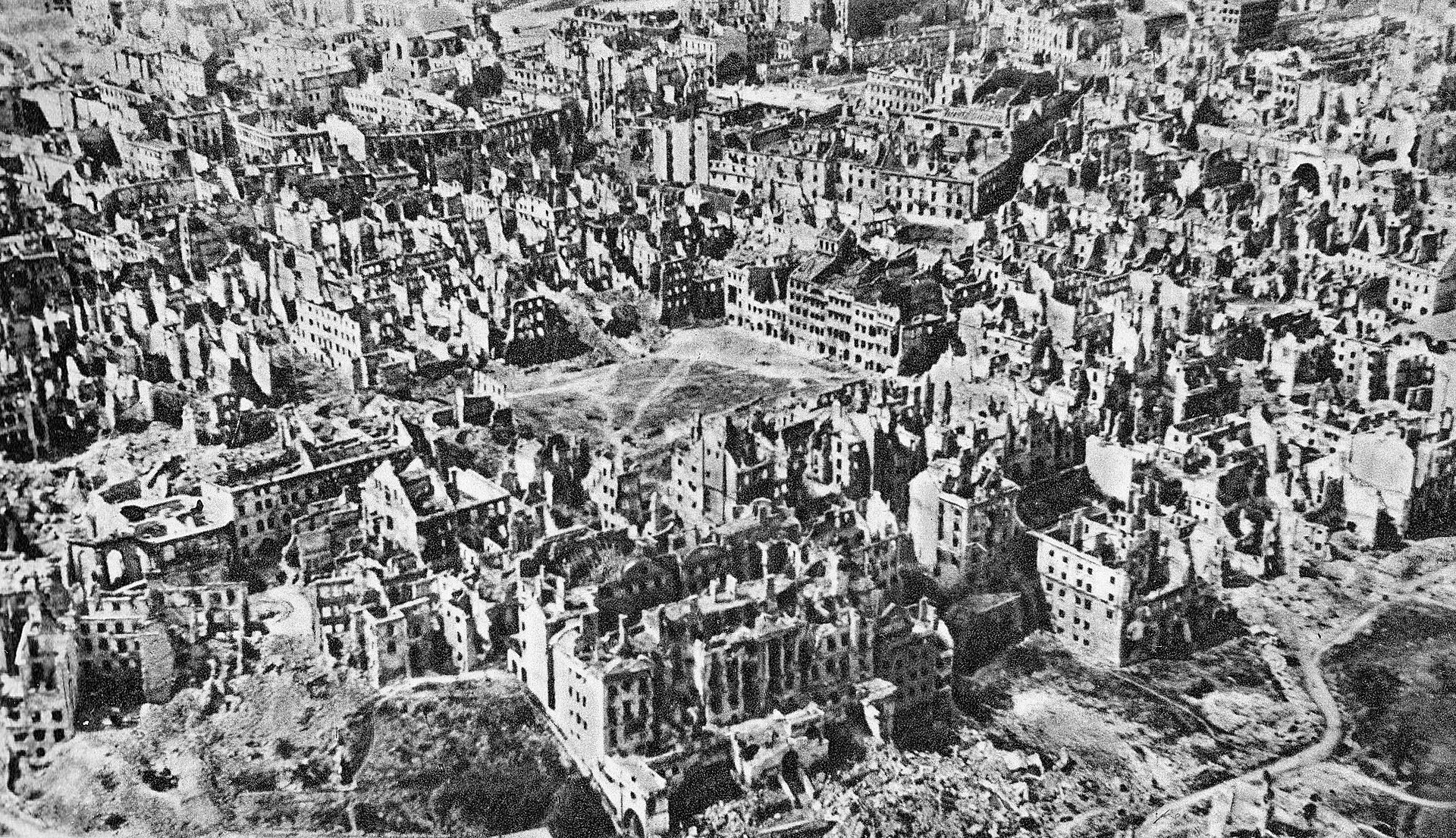The question of whether the Second World War ended in May 1945 may seem rhetorical or even absurd. However, if we look at the then-reality from a Polish perspective, the matter ceases to be so obvious.
by Łukasz Kamiński
Do you know what General Leopold Okulicki, the last commander of the Home Army, one of the largest underground military units of occupied Europe, was doing on 8 May 1945? Or what Deputy Prime Minister of the Polish government Jan S. Jankowski and the chairman of the underground parliament, Kazimierz Pużak, were doing, either?
They were certainly not celebrating the end of the war which had begun with an attack on their homeland, Poland. For many weeks they had been Moscow at the NKVD prison in Lubyanka. Isolated from the outside world, they were subjected to daily exhausting interrogations, while this same outside world demanded news and information about their lives over the course of many weeks. According to Pużak, the only one who survived (and not for long as he died in 1950 in a Communist prison), they only learned about the end of the war at the end of May.

To understand this situation, we must go back to the moment when the war broke out. The final step leading to its outbreak was the German-Soviet Nonaggression Pact, signed by Germany and the Soviet Union on 23 August 1939. According to its terms, Poland and several other countries of Central and Eastern Europe were to be divided between the two totalitarian states. As a result, on 1 September 1939, Germany invaded Poland, and then, on 17 September, the Soviet Union invaded it as well. At that time, half of Poland came under Soviet occupation. Among the mass repressions that followed, the most tragic was the Katyn Massacre in which 22,000 prisoners of war and political prisoners were murdered, as well as mass deportations.
After the outbreak of the German-Soviet war, relations between Moscow and the Polish authorities in exile were briefly restored. They were severed again in April 1943, after discovering the graves of the Polish officers murdered in Katyn. Soon after, Stalin openly began setting up new and totally subordinate authorities to introduce into Poland. It also became clear that he did not intend to give back the vast majority of the land that had been seized in 1939.
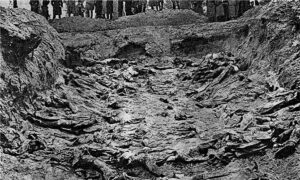
In July 1944, the Polish Committee of National Liberation was set up in Moscow to manage the territories which Stalin graciously intended to leave to Poland. Soon after, an anti-German uprising broke out in Warsaw. The Soviets not only did not help the insurgents for weeks, they also hampered the support efforts of the Western Allies. In the territories occupied by the Red Army on a larger scale, Home Army soldiers, who had been fighting against the German occupiers for years, were being arrested; many of them would be murdered while others were put in camps and prisons. This repression did not stop with the dissolution of the Home Army in January 1945.
In February 1945, the fate of Poland became the subject of the conference of the three chief Allied leaders in Yalta. Stalin’s territorial demands were accepted, leading to the expansion of Polish territory at the expense of Germany. The Provisional Government of National Unity was to be formed on the basis of the authorities controlled by Moscow with the participation of “democratic leaders from Poland and emigres.” After the war it would hold free elections.
The decisions made at the Yalta Conference were rejected by the government in exile, which considered it “a new partition of Poland, this time made by allies.” The attitude of the leaders of the Polish Underground State was different. They protested against the Yalta resolutions, which caused a “new, extremely heavy and harmful sacrifice” for Poland. At the same time, however, they declared their readiness to comply with them and take part in talks on forming a new government.
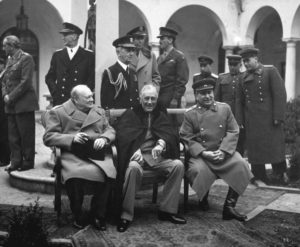
Stalin, however, did not intend to allow any of the underground representatives enjoying the support of Poles to take part in the talks. The invitation to negotiate that was sent to them in March 1945 turned out to be a trap. Sixteen representatives of the Polish Underground State were imprisoned and transported by plane to Moscow, where they were imprisoned in Lubyanka and subjected to intensive integration.
For a long time the Soviets refused information about the fate of those arrested. It was not until 3 May that Commissar of Foreign Affairs Vyacheslav Molotov admitted that they had been imprisoned. He did it during a conference in San Francisco during which the United Nations was being established. The only nation of the anti-Hitler coalition that did not send their representatives was Poland. This absence is a telling symbol of the fate of the nation on whose land the Second World War began. Shortly after Germany’s surrender on 13 May, the outstanding pianist Artur Rubinstein performed a concert for delegates. When he noticed the lack of a Polish flag, he asked those present to stand up and then played the Polish anthem.
On 8 May 1945, the same events took place in other countries and in many places in Poland, people expressed their joy because of the end of the cruel war. At the same time, however, something completely different was taking place which had not happened in other anti-German coalition countries. The official reports of the ceremony in the capital of Warsaw noted a lack of enthusiasm of those gathered there, and in the underground report sent to London it said: “The end of the war was received in Warsaw indifferently. It doesn’t change anything for us.” In the preserved diaries from that era we can find such entries as “rather pessimistic mood”, “We are entering a new period. For us this is a great unknown. Or maybe it will be a period even harder than the previous one?!”, or “the whole society […] is waiting for liberation.” Despite the end of the war, many people described their reality as akin to another occupation.
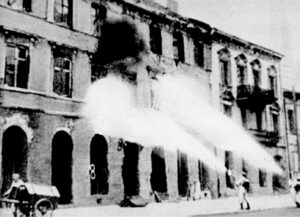
What’s more, despite the end of the war, the fighting continued in many places. Grajewo was captured by one of the partisan units on the night of 8 and 9 May 1945. The local Soviet garrison was blocked by machine gun fire, and at that time several dozen conspirators were released from detention at the Security Office. The commander of the action was Major Jan Tabortowski, pseudonym “Bruzda”, a pre-war officer, a participant in the fighting in September 1939, a member of the underground from January 1940, and a hero of the fight against Germany (he died during the fighting in 1954). Before entering the city, he explained to his soldiers that the war was not over for Poles, that they had to oppose the Sovietization of Poland.
The leaders of the underground state had a different view. They stated that “the war was over, but the fighting was ongoing. The fighting for the realization of the ideals formulated in the Atlantic Charter, for real freedom, democracy, justice and peace.” The end of the war was also bitterly received among Poles in exile, including tens of thousands of Polish soldiers. The weekly “Polska Walcząca” published in London immediately issued a commentary reflecting these feelings: “For the people of this country it is a day of joy and triumph. We soldiers of the Polish Armed Forces are joining the British people in feelings of the day of victory […] But for us this day does not mean the same. […] After more than five years of joint efforts, after a blood sacrifice, […] we did not see freedom for our own people or the grace of returning home.”
Why did the nation that first opposed Hitler and which suffered great casualties during the war, accept its end in this way? This is due to the situation in which Poland found itself. On 8 May 1945, Poland had no set borders. The Yalta Conference showed that almost half of the pre-war territory would become part of the Soviet Union. This was not only a clear violation of the principles of the Atlantic Charter, but also the actual implementation of the decisions of the secret annex to the German-Soviet Nonaggression Pact. However, the course of the new border was marked out only at the end of 1946. The acquisitions promised in return at the expense of Germany remained indefinite at this time, their shape was defined at the Potsdam Conference.
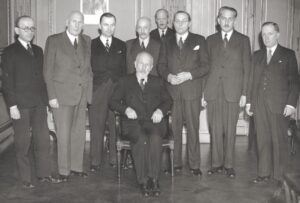
On 8 May 1945, there were two Polish governments. The legal one, leading the fight against the occupiers since 1939, and the usurper, appointed by the will of Stalin. The former, however, operated in exile, while the latter exercised real control over the territory, relying mainly on Soviet support. Thus there were two armies – half of the officers in the army subordinate to the Communists were Soviets, and the desertion rate was 30 percent. Repression continued against Home Army soldiers, there were posters on the streets with the slogan “spittle-bespattered dwarf of reactionary forces”. After the arrest of sixteen leaders, the chances of forming a new government not fully controlled by the Kremlin, seemed scant.
At the same time, the war losses were enormous. The symbol of material damage was the left-bank of Warsaw, after the fall of the heroic anti-German uprising the city had been basically razed to the ground at Hitler’s command. The scale of human losses was tragic – 5.5 million killed and murdered, including 3 million Polish Jews. Several million Poles were also far away from their homeland: war refugees, prisoners of war, prisoners of concentration camps, forced laborers, and deportees.
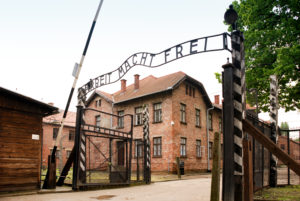
Feelings of uncertainty and fear were deepened by numerous rumors circulating in society at the time. The most popular concerned the expected new war, this time between the Western Allies and the Soviet Union. On the one hand, it was an expression of fear of a bloody struggle, on the other, for many, these rumors were a source of hope for a change in the fate of Poland.
Ultimately, Stalin decided to allow an independent politician – Stanisław Mikołajczyk, the prime minister in exile until autumn 1944, to participate in talks on the creation of a new government. Negotiations began in Moscow on 17 June 1945. Their real significance was soon defined by one of the Communist leaders, Władysław Gomułka: “Once we have gained power we shall never give it up… […] You can keep shouting that the blood of the Polish nation is being shed, that NKVD rules Poland, but we won’t turn back.” It was no accident that the next day the show trial of the leaders of the Polish underground began. It was both a form of pressure on Mikołajczyk and a symbol of Moscow’s full control over the fate of Poland.
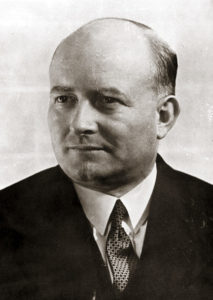
Moderate, by Soviet standards, sentences of up to ten years in prison were passed. However, three Poles, including Okulicki and Jankowski, never left the prison – they died in unexplained circumstances. Shortly thereafter, the Provisional Government of National Unity was established, in which the Communists retained full control over key ministries. As a result, the United States and Great Britain withdrew their recognition for the Polish authorities in exile, and other countries followed. Despite this, the government and the president in exile continued their (increasingly symbolic) activity until 1990.
Apparently, little changed, but after the arrival of Mikołajczyk to Poland, there was widespread enthusiasm. For the first time in a long time, Poles hoped that the fate of their country would change for the better. It was connected with the “free elections based on universal and secret voting” promised in Yalta. The following months were to show that these hopes were in vain.
Already after the establishment of the new government, the largest post-war Soviet crime against Poles took place. In July 1945, thousands of soldiers of the Red Army and the NKVD division operating in Poland carried out a major operation, which is remembered in history as the Augustów Roundup. During this action, 7,000 people suspected of cooperation with the Polish underground were arrested, of whom about 600 were murdered in a place unknown until today.
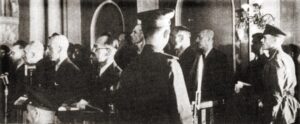
The Council of National Unity, a form of underground parliament, was dissolved on 1 July. In their last proclamation, they recalled the war effort of the Poles, as well as the policy of the Soviet Union towards Poland. Referring to the end of the war with Germany, it was stated that it found Poland “in an extremely difficult and even tragic situation. When other nations, especially the Western ones, after the liquidation of the German occupation regained real freedom and were able to settle their own lives, Poland, as a result of the war in which it suffered the largest casualties, was under occupation, with a government imposed by the neighboring state and without clear views on the help of her Western allies.” While the decision was taken to dissolve the Council, it was emphasized that this did not mean “spiritual surrender of the nation.” The final part of the document is entitled “Testament of Fighting Poland”. It consisted of 12 demands, including that the Red Army and the Soviet political police leave Poland, the cessation of persecution, free elections and the possibility of independent trade unions.
Despite further appeals to stop the fighting, the ongoing repression and lack of freedom forced thousands of soldiers to continue it. Underground activity began to die off after the “elections” of January 1947, in which the Communists announced the victory determined in advance. However, individual groups continued their doomed fight, and the last partisan died in 1963.
Pseudo-elections finally buried the hopes associated with Mikołajczyk, who had to flee the country. Many of his colleagues were murdered and thousands were sent to prison. In total, the installation of the Communist system cost the lives of about 50,000 people, including many heroes from the Second World War.
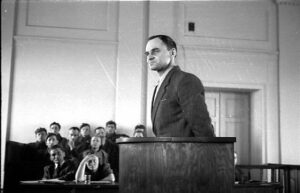
In the following years, Poles repeatedly opposed Communism. The biggest waves of protest took place in 1956, 1968, 1970, 1976 and 1980. As a result of the latter, the Solidarity Independent Self-Governing Trade Union was formed, which brought together nearly ten million members. Among them was a considerable group of former Home Army soldiers. Despite the imposition of martial law in December 1981, “Solidarity” survived underground, and in 1989 it won partly-free elections.
It was only then that the “Testament of Fighting Poland” was accomplished as Poland regained its independence, and Poles their freedom. In a sense, it was only then that the Second World War really ended for us.
Author: Dr. Łukasz Kamiński – the President of the Platform of European Memory and Conscience and former President of the Institute of National Remembrance from 2011 to 2016.
Translation: Alicja Rose & Jessica Sirotin

